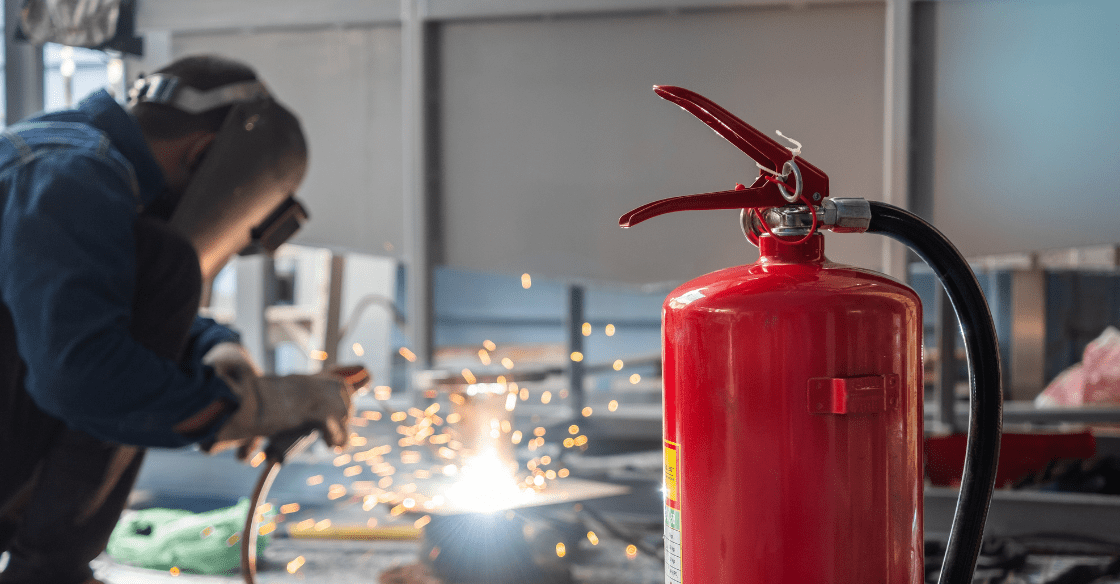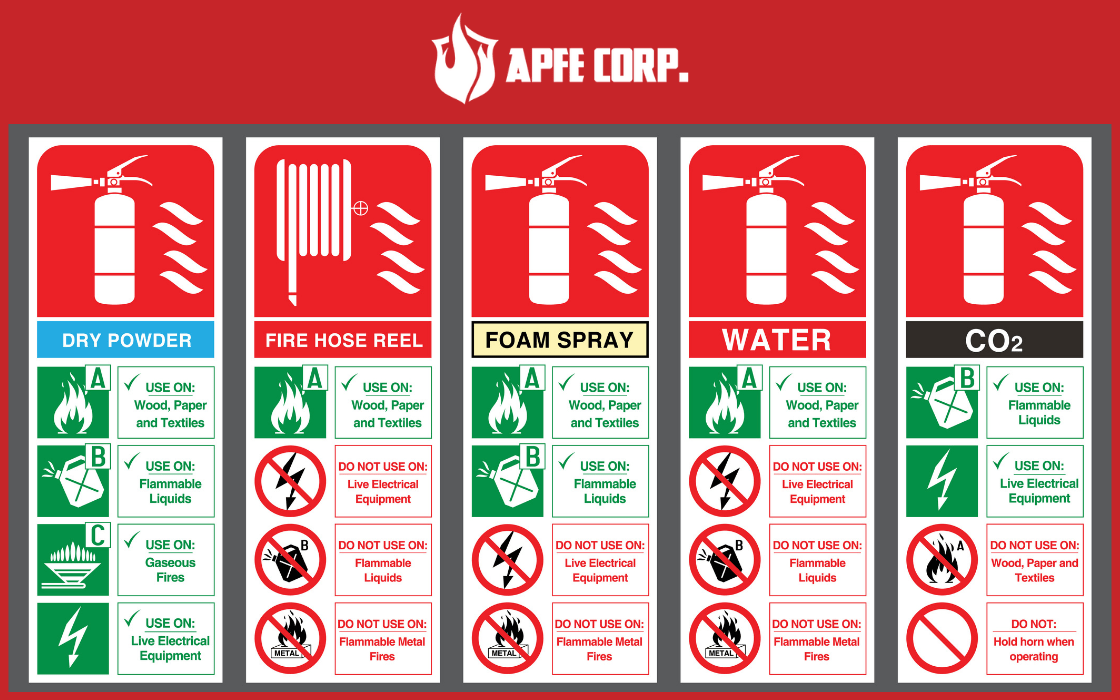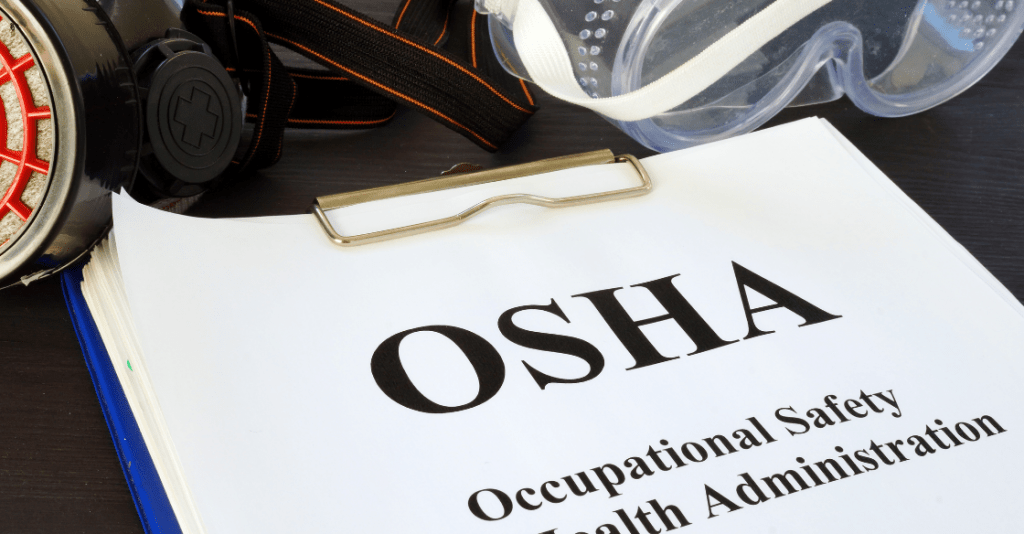In the US, firefighters respond to an emergency every 24 seconds. Having a fire safety plan in place is essential to ensure you’re prepared, and having the right fire extinguisher could save your home, workplace, or even lives. However, using the wrong fire extinguisher can be extremely dangerous, which is why it’s critical to understand how fire extinguishers work.
The 6 Classes of Fire
How many fire categories are there? There are six primary fire classes classified according to the igniting agent. Solids, gases, liquids, metals, kitchen oils, and electricity all come with different fire risks. Depending on the fire’s cause, some extinguishers are ideal, while others can cause more harm than good.
1) Class A Fire
Class A fires involve burning solids such as paper, wood, or structural elements of buildings. Combustible solids are a common source of fuel to ignite flames. For example, a newspaper near a stovetop could become a potential fire hazard. If the paper caught on fire, it could spread flames to curtains, wooden cupboards, and a building’s structure.
Type of Extinguisher to use
In most cases, a pressurized water extinguisher is used on Class A fires. These fire extinguishers are the standard option to put out most fires involving solids. However, these extinguishers shouldn’t be used near electronics or sources of electricity.

2) Class B Fire
Class B fires involve liquids such as chemicals, alcohol, oil, solvents, paints, fuels, and other explosive fluids. Although this type of fire is less common than a Class A fire, it can cause significantly more damage and result in more fatalities. For example, if a warehouse stored flammable goods improperly, and a spark ignited the liquids, a devastating explosion could result.
Type of Extinguisher to use
Two types of fire extinguishers can help put out a Class B fire. Either a powder or foam extinguisher is necessary to tackle a fire caused by hazardous substances. Never use a water extinguisher on a type B fire since this could spread the flames and make the fire more dangerous.

3) Class C Fire
A Class C fire involves flammable gases such as propane or butane. These fires are some of the most hazardous because of their potential for explosion. Many gases tend to be stored in pressurized containers, and most fire extinguishers are not only ineffective at fighting these fires but can make the fire worse.
Type of Extinguisher to use
First and foremost, you must shut off the gas supply before attempting to extinguish a gas fire. Dry powder extinguishers are typically most effective at putting out gas fires. Most Class C fire extinguishers have a blue band.
4) Class D Fire
Specific metals can conduct heat quickly, like sodium, titanium, and potassium, spreading fires and igniting other combustible materials. These metals are commonly used in industrial or laboratory settings. Many standard water-based and wet fire extinguishers are ineffective at putting out Class D fires, and using them could be dangerous.
Type of Extinguisher to use
Dry powder agents are designed to extinguish metal fires safely. Sometimes, you can extinguish small metal fires by smothering them with soil or sand. Other metal fires require dry powder fire extinguishers.

5) Electrical Fire
Electricity presents additional challenges when dealing with a fire, especially if water or other conductive materials are nearby. Heaters, appliances, and other electronic devices can cause this type of fire. For example, broken wiring or overloaded circuits can create heat and sparks that lead to flames.
Type of Extinguisher to use
In some cases, a carbon dioxide or dry powder fire extinguisher may be appropriate if the voltage is low enough. Before putting out an electrical fire, always turn off the power supply, and avoid using water or conductive fluids.
6) Class K Fire
Oils, fats, and kitchen greases can cause Class K fires. Both residential and commercial kitchens face Class K fire risks. Fires ignited by oil burn especially hot and long, making them more challenging to put out than a Class A fire.
Type of Extinguisher to use
Only use a wet chemical Class K fire extinguisher for grease fires. This particular type of extinguisher releases a foam that can effectively stop grease fires from spreading. You’ll recognize this fire extinguisher by its yellow band.

Types of Fire Extinguishers

Different fire extinguishers put out various fires, depending on the source of ignition. Multipurpose extinguishers can put out more than one type of fire.
- Water and Foam – This type of extinguisher is usually only useful for Class A fires.
- Carbon Dioxide – For Class B and Class C fires, but NOT Class A
- Dry Powder – For Class D metal fires
- Dry Chemical – A multipurpose extinguisher for fire Classes A, B, and C
- Wet Chemical – For Class K grease fires
Always choose a fire extinguisher that’s appropriate for the source of the fuel. Using the wrong fire extinguisher could cause flames to reignite, spread, or result in a more severe hazard. The necessary fire protection products you require will depend on the contents of your building.
Fire Sprinkler Systems
Installing fire sprinklers offers additional protection and can minimize damage if a fire occurs. Wet pipe fire sprinkler systems provide standard protection. Each sprinkler head functions independently, thereby reducing damage in the event of a false alarm.
In cold climates, dry pipe fire sprinkler systems may be a better option since they’re resistant to below freezing temperatures. Buildings that store hazardous materials, such as chemicals or flammable liquids, may require a foam sprinkler system.

Final Thoughts
Fire extinguishers can save lives by stopping the spread of fire, but they’re just one of the precautions to take that keep your building safe. Find out how to protect your home or workplace from fire using our fire safety checklist.
Learn more about the 6 Classes of Fire from the fire safety professionals at APFE Corp at 1-866-342-8756. We always look forward to answering your inquiries.




